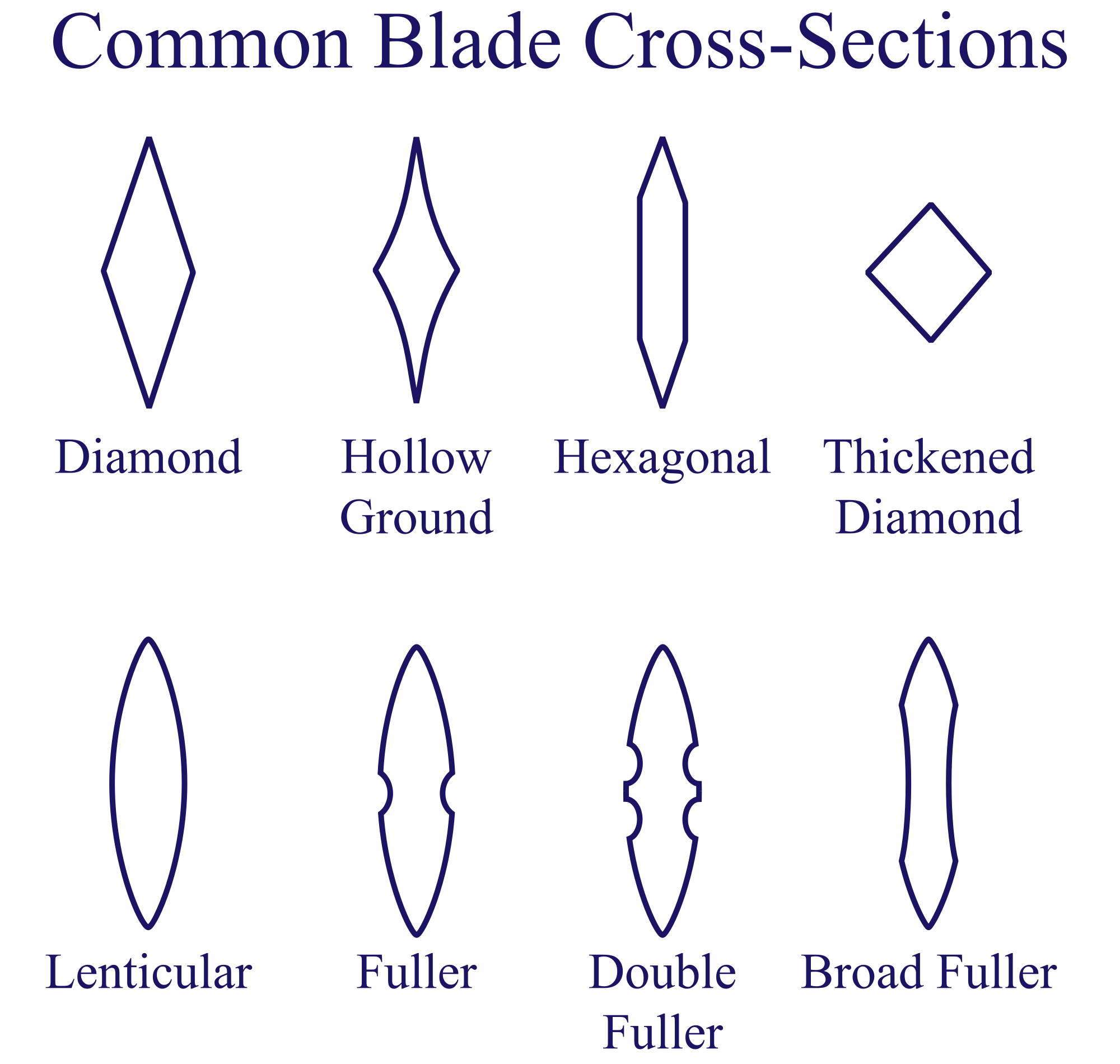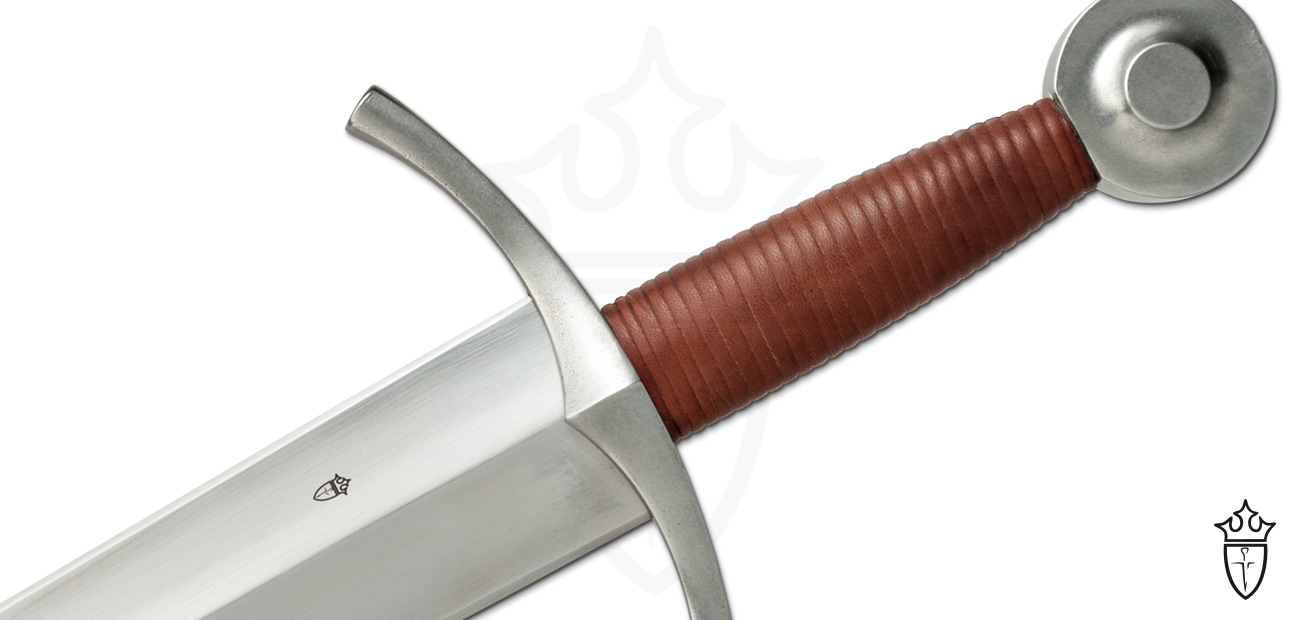One of the least common types of medieval swords, both historically and also with modern functional reproductions, was the Hollow Ground blade – which is essentially a blade with a concave grind either side of the central ridge that swoops up slightly and terminates with a secondary bevel..
Below are some examples of typical medieval sword cross sections from Wikipedia – the Hollow Ground blade is not exactly right, but gives you some general idea..
 A hollow ground blade was primarily used against lightly armored (leather) or unarmored opponents and the main advantage was, sharpness and viscous cutting ability. These were the kind of swords that would quite easily lop off and arm or a leg with a casual swipe, while the other types of edge geometry were designed to withstand chain and heavier armors, so lose some raw slicing ability in the process..
A hollow ground blade was primarily used against lightly armored (leather) or unarmored opponents and the main advantage was, sharpness and viscous cutting ability. These were the kind of swords that would quite easily lop off and arm or a leg with a casual swipe, while the other types of edge geometry were designed to withstand chain and heavier armors, so lose some raw slicing ability in the process..
To make it all work properly, a hollow ground sword needs to avoid tapering off to a thin edge but instead MUST end in a secondary bevel, something some collectors think is ahistorical, but the reality is that EVERY historical hollow ground sword had a secondary bevel to ensure the edge was strong enough to asborb the power of the cut.
In many ways, I am surprised hollow ground swords are not more commonly available – as they are, by their very design, the kind of swords best designed for cutting common backyard targets such as water filled bottles, pool noodles, tatami mats, etc (after all, most backyard cutters do not need a sword able to withstand chain armor).
But these days, there are essentially only 2 swords on the market with this geometry, the $1570 Albion Regent and – very recently – the $499 Kingston Arms Crecy Sword
 Above is a picture of the Kingston Arms version – and even from this pic, the hollow ground design – swooping in on both sides from the central ridge, then scooping upwards and ending in a viscous secondary bevel – is very clear to see.
Above is a picture of the Kingston Arms version – and even from this pic, the hollow ground design – swooping in on both sides from the central ridge, then scooping upwards and ending in a viscous secondary bevel – is very clear to see.
I think that the main reason these swords are not more commonly seen on the market is simply due to the extra difficulty involved in doing it well (the hollow ground geometry is NOT easy to do correctly, and takes nearly twice as long as a standard edge) and the fact that, well, not that many collectors understand the benefits of this kind of geometry and the fact that it needs to be done differently than a hollow ground knife.
As these are so rare, and yet so suitable to the desires and needs of many a backyard cutter, if you do have a chance to try one out – you will not be disappointed. That much I am certain of..




